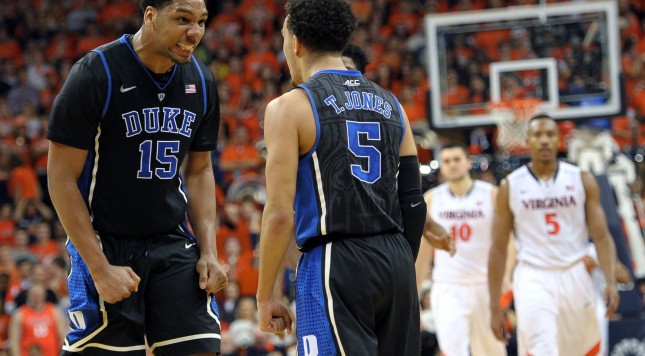The debate over which conference is the best seems to crop up every year around this time, and while I am not sure how relevant it is to college basketball in general, it still gets to be an interesting topic most years.
This year, however, I think the only real discussion is how one chooses to determine schedule strength. There are a lot of methods, but the basic ones seem to be weighing teams at the top of leagues more heavily, taking the average of the teams, or taking the median team.
While I don’t think the top of the league is the be-all and end-all (for instance: I don’t think the SEC is the best conference just because Kentucky is in it), I do think it should should matter. I also think taking the average of all the teams is a bad idea because one bad team can ruin it for everyone else. (For instance, say you have a decent conference, but the 300th-ranked team in the country is in the league as well. For schedule strength, having the 300th-ranked team and 250th-ranked team doesn’t change the quality of the conference much, but it makes a big difference in the overall average). It also becomes readily apparent in this day an age that basing conference strength on a statistic that is a counting stat will favor leagues like the ACC and Big Ten, which have 15 and 14 members, respectively, over a conference like the Big 12 with just 10 members.
Even though I tend to give the top of the conference a bit of extra credit, I would rank the (major) conferences this way:
1. Big 12
The Big 12 has an average rating in KenPom of .8513, by far the best in the country this year and currently the best by a conference since 2011. Eight of the league’s 10 teams are in the KenPom top 50, and nine are in the top 100. Oklahoma and Kansas look to be Final Four contenders, while Iowa State and West Virginia could be as well. While Texas sits at just 3-5 in Big 12 play, there is a reason a lot of people picked the Longhorns to win the league, and they could rebound and have a strong tournament as well. The league has a good shot of getting 70 percent of its teams into the NCAA tournament, and potentially 80 percent.
2. ACC
The ACC has four teams outside the KenPom top 100, and one outside the top 150, but makes up for it with five top-15 teams. Virginia and Duke are very strong, and with Marcus Paige I trust North Carolina will have something to say about things before it’s all over. I don’t trust Louisville and Notre Dame due to not having enough offense and defense respectively, but what the ACC lacks in depth (after the top five, the ACC drops off dramatically; it doesn’t have another team even in the top 60), it makes up for in star power.
3. Big East
The Big East has a top-10 team in Villanova, but really has built itself on depth, with an average KenPom rating of .8088. The Big East has three sub-100-ranked teams, but also six in the top 50. I had Villanova in my preseason Final Four, but outside of the Wildcats, I don’t think any other Big East team will make much noise in March, so three might be too high of a ranking for the Big East.
4. SEC
The SEC is basically Kentucky and no one else. I don’t trust the KenPom ratings of basically everyone else in the league, though it is worth noting it has nine teams ranked in the top 50. I don’t think the conference will have a single team make the second weekend of the NCAA tournament other than the Wildcats, but Kentucky has been so good this year that it elevates the rest of the league.
5. Pac-12
The Pac-12 gets the nod over the Big Ten despite a worse average ranking of its teams (.7826 for the Big Ten and .7613 for the Pac 12), because in Arizona and Utah the league has two legitimate national championship threats. Stanford and UCLA have both looked good at times this season as well, but the Pac-12 also has only three of its teams rank outside the top 100.
6. Big Ten
My preseason championship pick, Wisconsin, would probably still be my championship pick if the tournament started today, but after the Badgers, the league goes downhill fast. The league has no other top-10 teams, just three in the top 25, and half of the league’s teams are outside the top 50. For a league that has been probably the second best on aggregate over the last five or so years, it’s been a rough season in the Midwest.
*
Again, this ranking could potentially change based on how you choose to rank the teams. If you focus almost exclusively on the teams at the top, the ACC probably gets the nod over the Big 12, but really any other way you look at it, whether it be median team, average rank of teams, strength at the bottom of the league, or a combination of any of the methods, the Big 12 reigns supreme.

